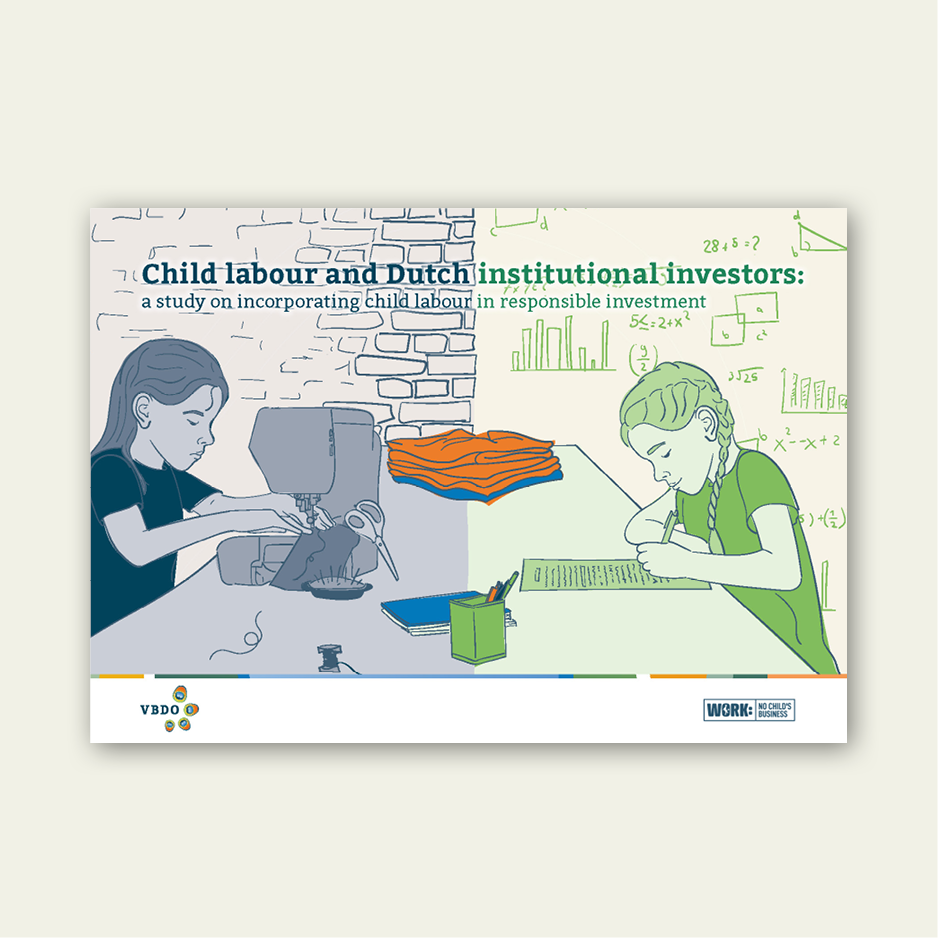162 million children globally are part of the labour force. For the Dutch financial sector, child labour is an underexposed topic. Two-thirds of the institutional investors surveyed mention child labour in their RI policy, but only 7% of this group has developed a distinct policy on child labour. These are the outcomes of a study performed by VBDO in collaboration with the Alliance Work: No Child’s Business surveying the largest Dutch banks, insurance companies and pension funds on child labour in responsible investment in the context of 2021 being the International Year for the Elimination of Child Labour.
‘For the first time in twenty years, child labour is on the rise. Over 160 million children do not or only partially attend school because of this. This harms children’s development. Institutional investors can contribute to eliminating child labour by (collectively) acting on this issue as part of their responsible investment policy and activities. Together we can break this vicious circle.” Says Josje Beukema, Lobby & Advocacy officer on Children’s Rights & Business at Save the Children Netherlands when asked about the motivation behind this study.
Exclusion of child labour nigh impossible
The vast majority of the 64 surveyed institutional investors (81%) indicate child labour is excluded, for example through excluding violations of the UN Global Compact.
Sara Heinsbroek, project manager at VBDO: ‘However, due to the complexity of supply chains of companies and large investment universes of institutional investors the likelihood of (indirect) exposure to child labour in sectors at risk is clearly present. It is therefore of utmost importance to not just keep on top of necessary due diligence but to proactively take action on this issue. For example by explicitly including child labour as a topic when engaging companies.’
Investors take an indirect approach to child labour
Most institutional investors take an indirect approach towards child labour. The study shows this approach is present in both the RI policy and the use of RI instruments by including child labour in labour rights or human rights. For example, the majority of investors prefer to engage on child labour indirectly via topics such as the living wage (49%).
Collaboration is key
The study shows few collaborative efforts, such as collective engagement, directly focused on the elimination of child labour while 76% of surveyed investors name engagement as the most recommended action to take on this topic.
Heinsbroek: ‘Chances are high institutional investors are in fact investing in child labour through the supply chains of companies. Waiting for controversy to happen before considering exclusion foregoes necessary due diligence, is inefficient and does not fully take advantage of the possibilities active ownership provides. Our advice: make child labour a separate topic of interest, collaborate with civil society in areas exposed to risks to be able to create more transparency in supply chains and last, initiate collaborative engagement in key sectors.’

